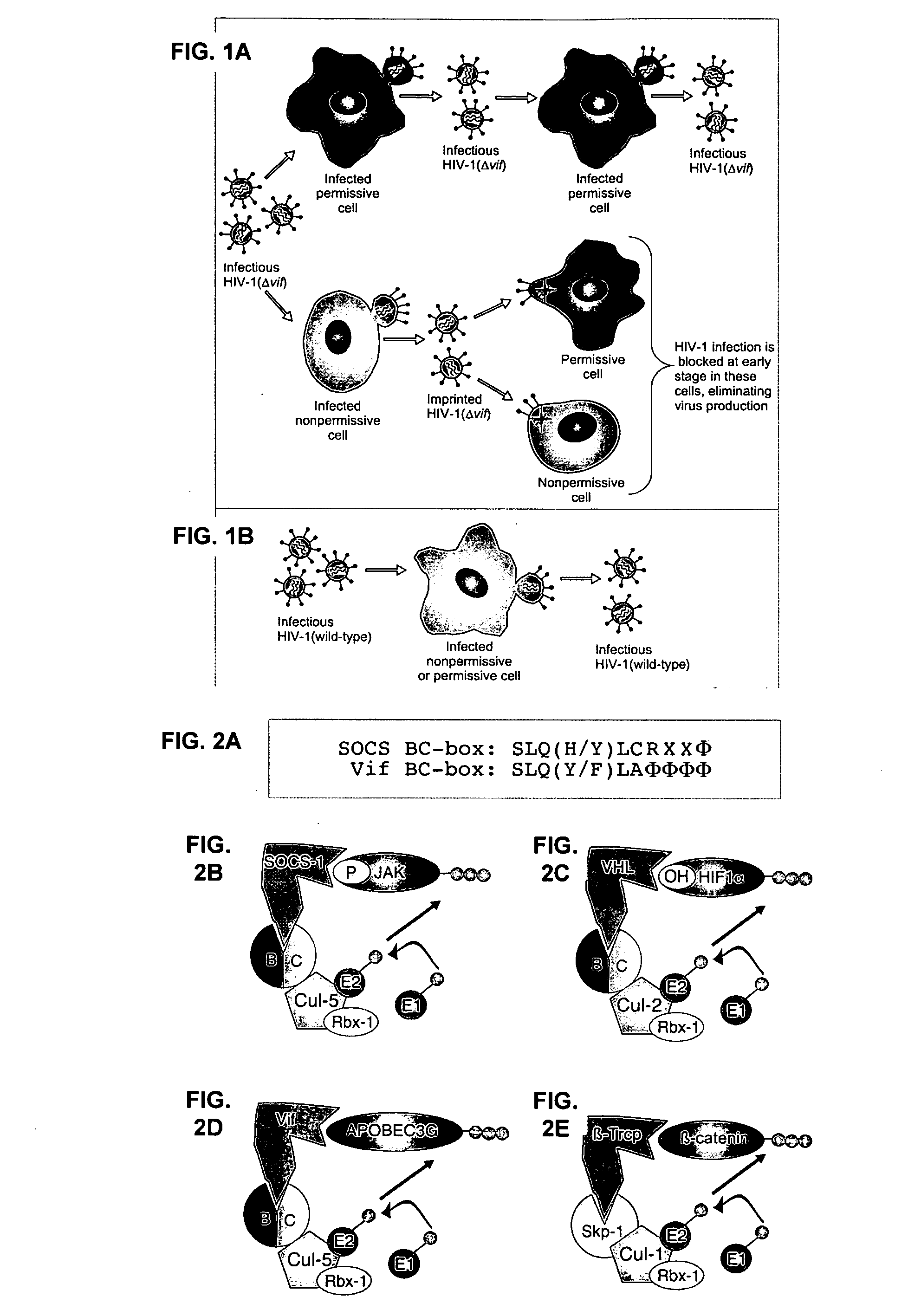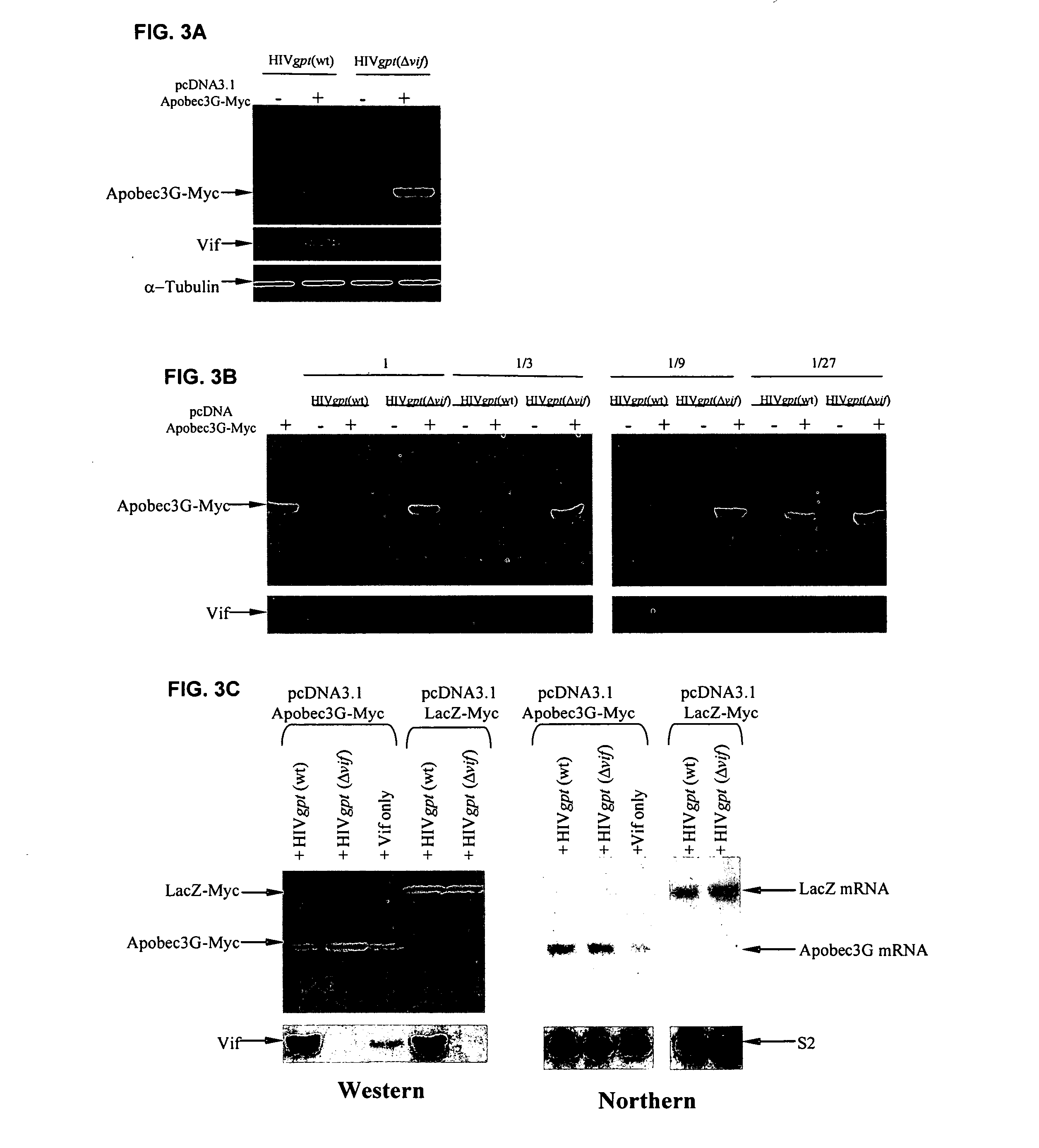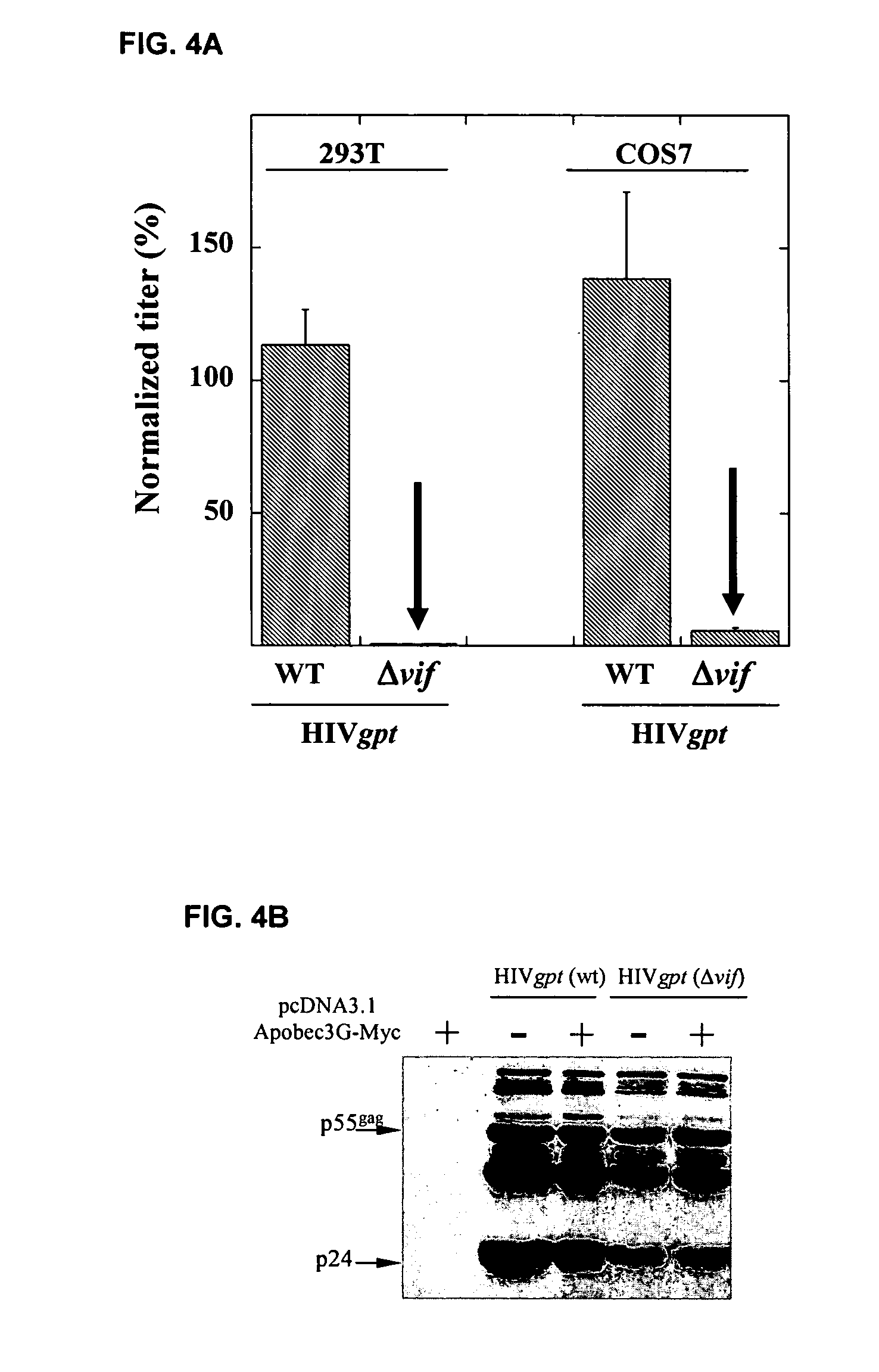Methods for identifying inhibitors
- Summary
- Abstract
- Description
- Claims
- Application Information
AI Technical Summary
Benefits of technology
Problems solved by technology
Method used
Image
Examples
first embodiment
[0176] Provided herein in a first embodiment is a method for identifying an agent that affects the ability of a lentivirus to replicate in a cell in the presence of a Vif protein or peptide. Examples of such methods involve contacting the agent to the cell under conditions sufficient to allow interaction between the cell and the agent, evaluating an amount of an APOBEC3G protein or peptide in the cell, and comparing the amount of the APOBEC3G protein or peptide in the cell contacted with the agent to an amount of APOBEC3G protein or peptide in a control cell not treated with the agent, wherein a statistically significant difference in the amount of the APOBEC3G protein or peptide in the cell contacted with the agent, as compared to the control cell not treated with the agent, identifies the agent as one that affects the ability of a lentivirus to replicate in a cell. Optionally, Vif is expressed in the cell, for instance, from a vector or a lentiviral vector. Optionally, the Vif is ...
example 1
HIV-1 Vif Protein Binds the Editing Enzyme APOBEC3G and Induces its Degradation
[0296] This example demonstrates that Vif binds to APOBEC3G and induces its rapid degradation, thus eliminating it from cells and preventing its incorporation into HIV-1 virions (Marin et al., Nat. Med. 9:1398-1403, 2003).
[0297] Studies of Vif mutants imply that it contains two domains, one that binds APOBEC3G and another with a conserved SLQ(Y / F)LA motif that mediates APOBEC3G degradation by a proteasome-dependent pathway.
[0298] Methods
[0299] Expression vectors: pHIV-gpt(wt) and its derivative pHIV-gpt(.DELTA.vif) were previously described (Madani & Kabat, J. Virol. 72, 10251-10255, 1998; Page et al., J Virol 64, 5270-5276, 1990; Madani & Kabat, J. Virol. 74, 5982-5987, 2000). pcDNA3.1-Vif was donated by D. Gabuzda (Dana-Farber Cancer Institute, Harvard, Boston, Mass.). Rev-dependent plasmids for expression of the Vif mutants .DELTA.2, .DELTA.5, .DELTA.6, .DELTA.7, .DELTA.9, .DELTA.10, .DELTA.12 and .DEL...
example 2
Cell-Based System Capable of Identifying Inhibitors of Vif-Mediated APOGEC3G Degradation
[0328] This example provides an additional APOBEC3G fusion protein, YFP-APOBEC3G (SEQ ID NO: 4), and demonstrates its use in a cell-based system for use in methods of identifying inhibitors of Vif-mediated APOBEC3G degradation.
[0329] Using methods essentially similar to those described in Example 1, a vector was constructed that encodes a chimeric protein containing the yellow fluorescent protein (YFP) at the amino terminus and APOBEC3G at the carboxyl terminus (YFP-APOBEC3G; SEQ ID NOs: 3 and 4). Cotransfection of plasmids that encode this chimera and Vif into human 293T cell cultures results in only a few fluorescent cells, consistent with a Vif-induced degradation (FIG. 13A, top two panels). In contrast, cotransfection with a vector lacking Vif results in a much larger fraction of fluorescent cells. Moreover, treatment of the culture that contains Vif and YFP-APOBEC3G with a proteasome inhibit...
PUM
| Property | Measurement | Unit |
|---|---|---|
| Interaction | aaaaa | aaaaa |
Abstract
Description
Claims
Application Information
 Login to View More
Login to View More - R&D
- Intellectual Property
- Life Sciences
- Materials
- Tech Scout
- Unparalleled Data Quality
- Higher Quality Content
- 60% Fewer Hallucinations
Browse by: Latest US Patents, China's latest patents, Technical Efficacy Thesaurus, Application Domain, Technology Topic, Popular Technical Reports.
© 2025 PatSnap. All rights reserved.Legal|Privacy policy|Modern Slavery Act Transparency Statement|Sitemap|About US| Contact US: help@patsnap.com



